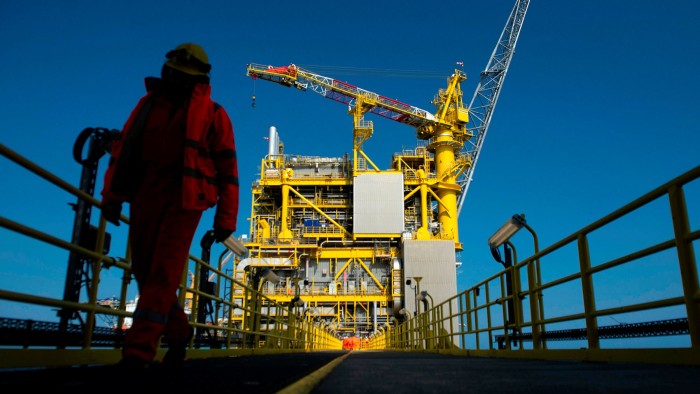Stagflation risk returns for investors as gas prices surge

Roula Khalaf, Editor of the FT, selects her favourite stories in this weekly newsletter.
The writer is chief economist of G+ Economics
As an extreme surge in European gas prices rattles markets, suddenly stagflation has returned as a risk for investors to factor into their outlook, casting a shadow over the recovery from the Covid-19 pandemic.
The threat might be far from a repeat of the 1970s when double-digit inflation rates, rising unemployment and weak economic growth left scars on the collective memory of markets.
However, the risk of a stagflation scenario of slowing growth and rising prices is enough for investors and policymakers to worry about.
In short, stagflation risks undermining the rosy market calculus of strong growth underpinned by cheap finance into perpetuity that is currently priced in cross-asset valuations.
There is a growing realisation among policy officials that economies are nearer to full employment than previously thought and the supply disruptions caused by the pandemic will keep inflation higher for longer than previously expected.
This is leading the US Federal Reserve and the Bank of England towards tapering Covid-19 stimulus and has emboldened the hawkish voices on the European Central Bank’s Governing Council calling for ending emergency government bond purchases sooner than planned earlier in the year.
The recent kick higher in global bond yields is a sign that markets are not only taking this into account but are finally starting to take supply chain disruptions seriously.
The rise in bond yields partly reflects concerns that port congestion and the effects of coronavirus variants on workforce participation will mean that the cost pressures may prove more intractable than transitory.
In turn, such concerns raise the risk that higher inflation may become a self-fulfilling prophecy by forcing businesses to prioritise survival over growth, and profits over market share, by passing higher costs on to end users. Increased retail prices and the labour market dislocations of the economic reopening would then prompt workers to seek real income repair by demanding higher wages.
At the same time, stubborn supply constraints have amplified political pressures for more conservative fiscal policies. Along with the expected withdrawal of central bank support, this raises questions about the longevity of global economic recovery beyond the initial V-shaped bounce from the early lockdowns.
The momentum behind economic reopening is fading and business confidence in the global demand outlook has peaked. The recovery in private business investment — itself a key input into easing global supply bottlenecks — is still only in its early stages and vulnerable to a slowdown in the face of uncertain demand.
The likelihood that we are passing peak real growth and peak financial liquidity make it more likely that higher bond yields herald the end of the sweet spot of this economic cycle.
Lower market rates have acted as a critical growth stabilisation mechanism in the past year, by creating life-saving fiscal space for governments to respond to the enormous social pressures of the pandemic. It has also helped to facilitate corporate restructuring, spur a shift by business towards green technology, reflate corporate earnings and lowered credit costs.
Higher bond yields will not only set the growth stabilisation measures into reverse, but also drive capital losses in bond holdings, reduce protection in equity portfolios and amplify emerging market stresses. Rising borrowing costs could also potentially reawaken the ghosts of the euro fiscal crisis.
The resurgence of inflation will raise questions about a key underpinning of markets in the Covid-19 era — that large increases in fiscal support can by financed by monetary expansion with few repercussions (aka the fashionable Modern Monetary Theory).
Investors have largely taken this for granted so far. But fiscal and monetary policymakers face an unprecedented new challenge of finding a smooth exit to the next “new normal” era.
This means not just tempering the sugar rush of current demand stimuli to address the self-fulfilling psychology of public inflation fears.
The imperative is creating more targeted public investment and private capital incentives towards tackling climate change, ageing populations and the constraints of fragmented supply chains. This is where true economic stability — growth, inflation, financial, fiscal and social — lies. The policy revolution of the post-coronavirus era is just starting.
Comments